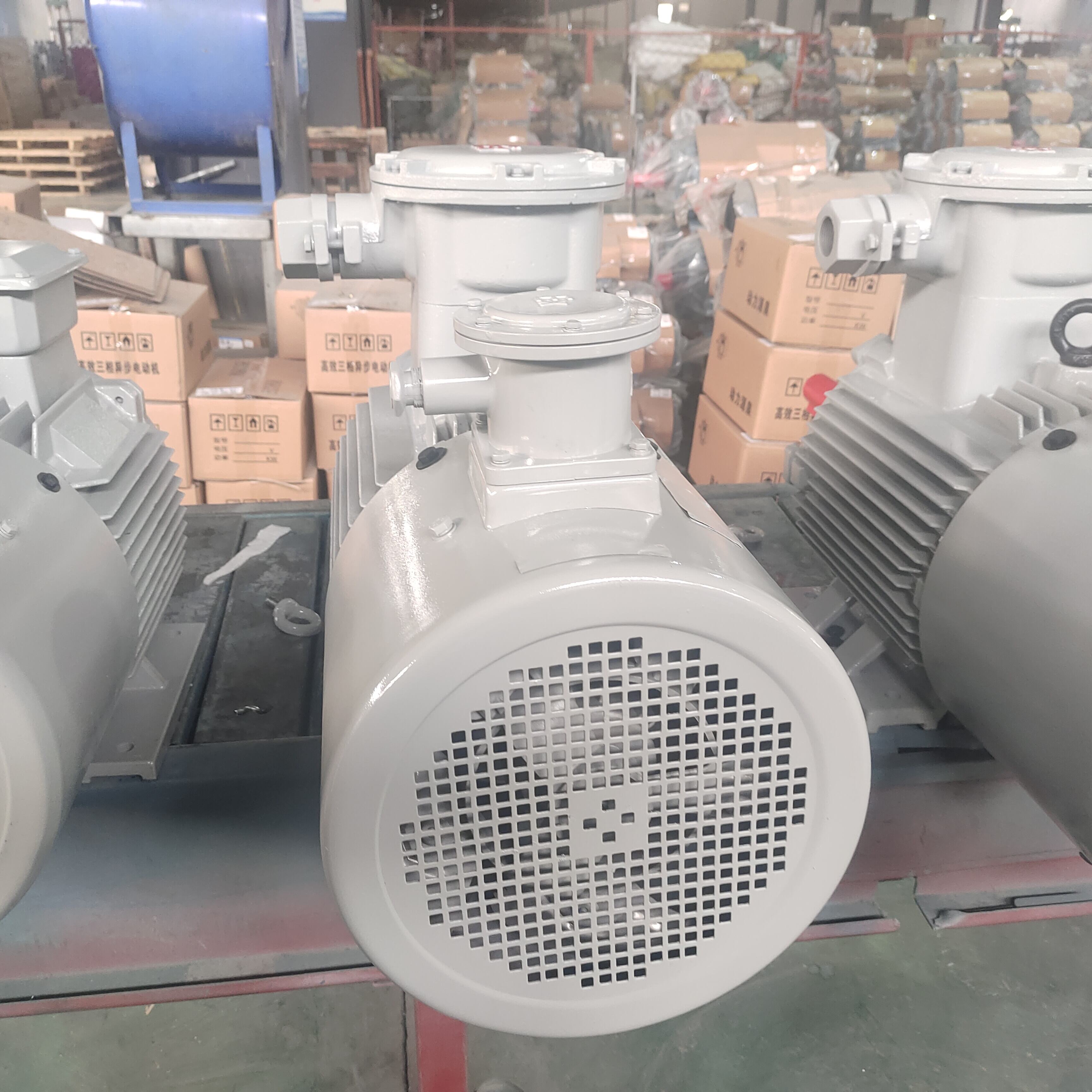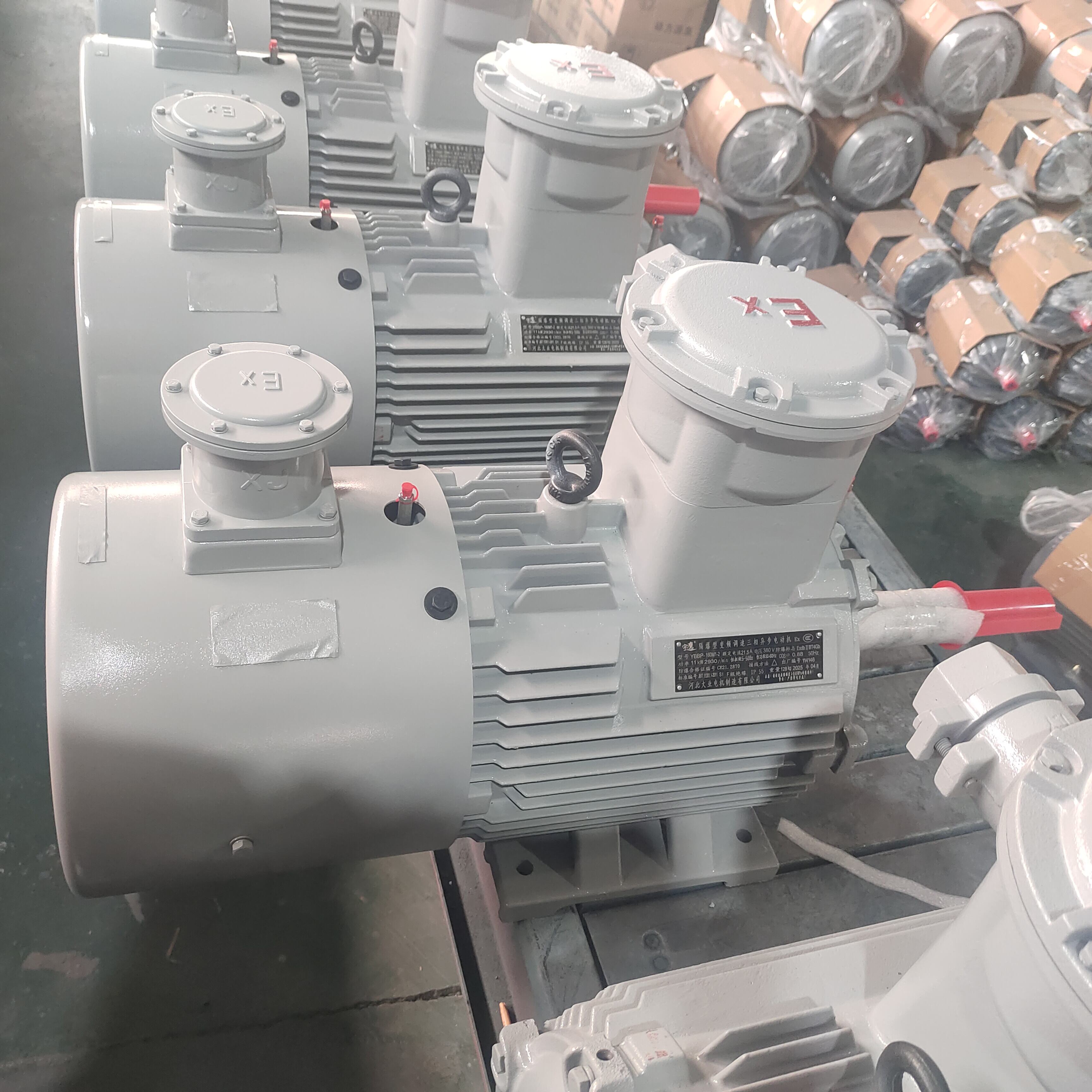Selecting and Installing Variable Frequency Motors
Introduction to Variable Frequency Motors
Electric motors are at the heart of industrial operations, powering pumps, compressors, conveyors, and ventilation systems. Traditionally, these motors operated at a fixed speed determined by the supply frequency, which often led to inefficiencies when load conditions fluctuated. The development of Variable Frequency Motors, coupled with variable frequency drives (VFDs), has transformed how industries approach motor efficiency and control. By adjusting the frequency and voltage supplied to the motor, Variable Frequency Motors can adapt to load requirements in real time, reducing energy waste and enhancing operational flexibility. For engineers, facility managers, and technicians, selecting and installing these motors properly is critical to achieving the desired performance and long-term reliability.
Understanding the Function of Variable Frequency Motors
Principles of Operation
Variable Frequency Motors work by receiving electrical supply from a VFD, which converts fixed-frequency input power into variable-frequency output power. The motor speed is directly proportional to the supply frequency, allowing precise control of rotation speed and torque. This makes them suitable for applications where demand changes frequently, such as pumping water, ventilating buildings, or running production machinery.
Benefits of Variable Frequency Motors
They bring multiple advantages, including improved energy efficiency, extended equipment life, reduced downtime, and enhanced process control. By slowing down or speeding up as needed, these motors consume only the energy required at any given moment.
Selecting Variable Frequency Motors
Assessing Application Requirements
The first step in selecting Variable Frequency Motors is to assess the specific application requirements. Engineers must evaluate the type of load, whether constant torque, variable torque, or constant horsepower. For example, pumps and fans generally require variable torque motors, while conveyors often need constant torque solutions. Understanding the load profile ensures the motor matches the operational demands.
Power and Voltage Ratings
Choosing the correct power rating is critical to avoid underloading or overloading. Motors should be sized according to the maximum anticipated load but not excessively oversized, as this reduces efficiency. Voltage compatibility is equally important; motors must match the available supply voltage while accommodating VFD control.

Efficiency Standards
Modern Variable Frequency Motors are designed to meet or exceed international efficiency standards such as IE3 or NEMA Premium. Selecting motors that meet these requirements ensures long-term energy savings and compliance with regulations.
Environmental Conditions
Environmental factors such as temperature, humidity, altitude, and dust exposure must be considered. Motors intended for harsh environments may require special enclosures such as Totally Enclosed Fan Cooled (TEFC) or explosion-proof designs to ensure safe and reliable operation.
Integration with VFDs
The selected motor must be compatible with the chosen VFD. Compatibility involves ensuring that the motor insulation can handle the switching frequencies of the drive, and that the drive settings can be adjusted to the motor’s specifications. Manufacturers often provide matched motor-drive packages to simplify selection.
Installation Guidelines for Variable Frequency Motors
Site Preparation
Proper site preparation is essential for smooth installation. The area should allow adequate ventilation, protection from contaminants, and easy access for maintenance. Foundations must be strong enough to support the motor’s weight and prevent vibration.
Electrical Connections
Electrical wiring must comply with national and international standards. Shielded cables are recommended to reduce electromagnetic interference caused by VFD switching. Grounding is critical to protect equipment and personnel from faults. Technicians should follow the manufacturer’s wiring diagrams carefully.
Mechanical Alignment
The motor must be mechanically aligned with the driven equipment to prevent undue stress on shafts and bearings. Misalignment can cause vibrations, increased wear, and premature failure. Using laser alignment tools ensures greater accuracy compared to manual methods.
Cooling Considerations
Since Variable Frequency Motors often operate at lower speeds, their self-cooling capacity may be reduced. External fans or auxiliary cooling systems may be required in continuous low-speed applications. Adequate clearance around the motor ensures efficient airflow.
Drive Configuration
Configuring the VFD correctly is crucial for optimal performance. Parameters such as acceleration and deceleration times, maximum and minimum speed limits, and torque settings must be programmed according to the application. Engineers should also enable protective functions such as overcurrent protection, thermal monitoring, and fault logging.
Testing and Commissioning
Before commissioning, thorough testing must be conducted. This includes checking electrical connections, verifying insulation resistance, and confirming that drive parameters align with motor specifications. A trial run under no-load and load conditions ensures that the system operates smoothly before being integrated into full production.
Common Challenges and Solutions
Harmonics and Power Quality
VFDs can introduce harmonics into the electrical system, leading to power quality issues. Installing harmonic filters or using drives with active front-end technology mitigates this problem.
Overheating
Improper installation, poor ventilation, or incorrect drive settings can cause overheating. Regular monitoring and preventive maintenance help identify issues early.
Noise and Vibration
Variable Frequency Motors may produce audible noise due to switching frequencies. Selecting drives with higher switching frequencies or using acoustic enclosures reduces noise levels.
Compatibility with Legacy Systems
Integrating Variable Frequency Motors into older systems may present challenges. Retrofit kits or matched motor-drive packages help bridge compatibility gaps and simplify upgrades.
Maintenance and Long-Term Reliability
Regular Inspections
Routine inspections should include checking connections, bearings, alignment, and insulation. Infrared thermography can detect hot spots that indicate potential problems.
Drive Monitoring
Modern VFDs include monitoring features that track motor performance, fault histories, and energy consumption. Using this data helps schedule predictive maintenance and reduces unexpected failures.
Lubrication and Cleaning
Bearings must be lubricated according to manufacturer guidelines. Dust and debris should be cleaned regularly to maintain efficient cooling and prevent overheating.
The Future of Variable Frequency Motors
Variable Frequency Motors are increasingly integrated into smart systems connected to the Industrial Internet of Things (IIoT). This allows real-time monitoring, predictive maintenance, and automated optimization. With advances in semiconductor technology, motors and drives are becoming more compact, efficient, and intelligent. In renewable energy applications, these motors are vital for balancing variable inputs from wind and solar sources with consistent output performance.
Conclusion
Selecting and installing Variable Frequency Motors is a process that requires careful consideration of application requirements, environmental conditions, and compatibility with variable frequency drives. Proper installation practices, including alignment, wiring, cooling, and drive configuration, ensure reliable performance and extended service life. While the initial investment may be higher compared to traditional motors, the long-term savings in energy efficiency, reduced maintenance, and improved process control justify the cost. As industries move toward smarter and more sustainable operations, Variable Frequency Motors will continue to play a central role in ensuring efficient and adaptable performance.
FAQ
What is the first step in selecting Variable Frequency Motors?
The first step is to evaluate the application requirements, including load type, power rating, and environmental conditions.
Can any motor work with a variable frequency drive?
Not all motors are compatible. Motors must have insulation and design features that can withstand the switching frequencies of VFDs.
Do Variable Frequency Motors save energy?
Yes, they significantly reduce energy consumption by adjusting speed and torque to match real-time load demands.
What installation factors are most important?
Key factors include proper electrical wiring, mechanical alignment, ventilation, and correct drive parameter settings.
How do you prevent overheating in Variable Frequency Motors?
Ensure adequate ventilation, correct drive configuration, and in some cases, add auxiliary cooling systems.
Are harmonic issues common with VFDs?
Yes, harmonics can affect power quality, but they can be controlled using harmonic filters or advanced drive technology.
How does maintenance differ from traditional motors?
Maintenance includes standard practices like lubrication and inspection, but also involves monitoring drive performance and ensuring clean cooling systems.
Can Variable Frequency Motors be used in harsh environments?
Yes, but motors must have appropriate enclosures such as TEFC or explosion-proof designs to ensure safe operation.
Do Variable Frequency Motors require special commissioning?
Yes, thorough testing of electrical connections, alignment, and drive parameters is essential before full operation.
What future trends will affect Variable Frequency Motors?
Integration with IoT, predictive maintenance systems, and improved semiconductor technologies will make them smarter, more efficient, and more reliable.
Table of Contents
- Selecting and Installing Variable Frequency Motors
- Introduction to Variable Frequency Motors
- Understanding the Function of Variable Frequency Motors
- Selecting Variable Frequency Motors
- Installation Guidelines for Variable Frequency Motors
- Common Challenges and Solutions
- Maintenance and Long-Term Reliability
- The Future of Variable Frequency Motors
- Conclusion
-
FAQ
- What is the first step in selecting Variable Frequency Motors?
- Can any motor work with a variable frequency drive?
- Do Variable Frequency Motors save energy?
- What installation factors are most important?
- How do you prevent overheating in Variable Frequency Motors?
- Are harmonic issues common with VFDs?
- How does maintenance differ from traditional motors?
- Can Variable Frequency Motors be used in harsh environments?
- Do Variable Frequency Motors require special commissioning?
- What future trends will affect Variable Frequency Motors?


